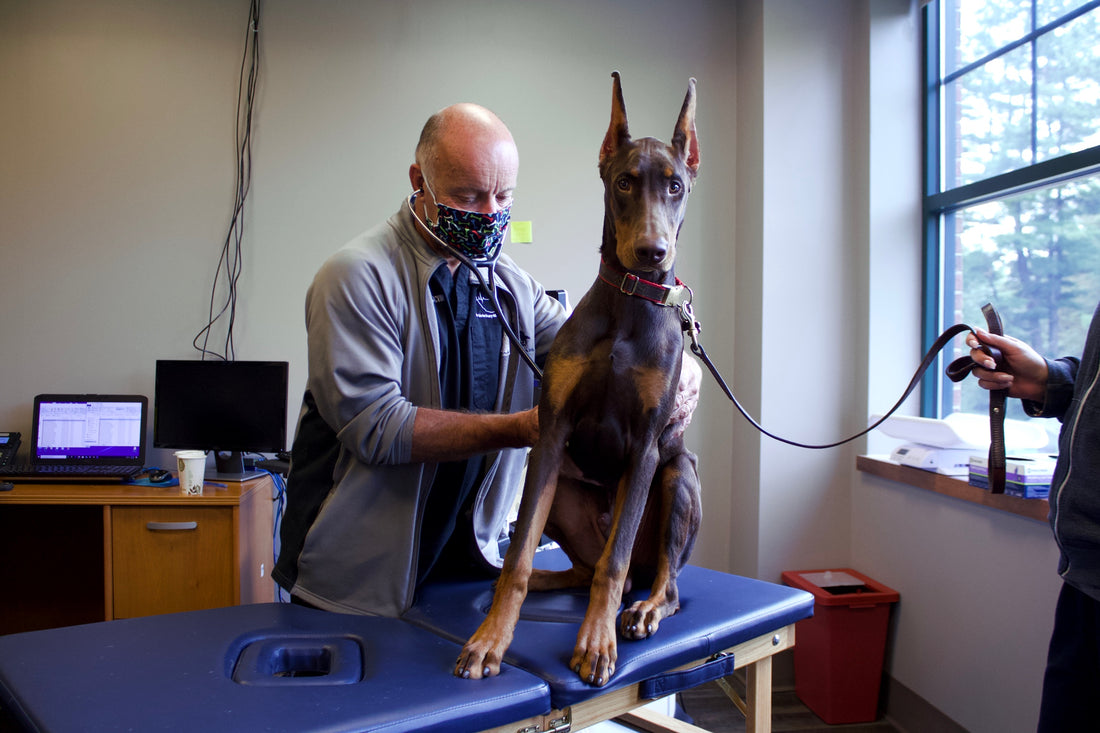The Central Hospital for Veterinary Medicine is like a rabbit warren. At least, that’s how it feels to a visitor being escorted through one corridor to another, one room to the next, around corners and down stairs.
From the outside, the pace at the North Haven hospital seems pretty routine. Pet owners are making brief forays into the lobby to drop off or pick up pets before heading back to their cars, where pandemic regulations now require them to wait in isolation. Staff come in and out as shifts change. Several people can be seen through the plate glass working at the front desk. But that’s nothing compared to what’s going on deeper inside.
sponsored by
An entire lower level, unseen from the parking lot above, stretches the space to more than 20,000 square feet, including 14 exam rooms, six operating rooms, a new intensive care unit, a recovery unit, an in-house lab, spaces devoted to infectious diseases and chemotherapy, rooms housing specialized equipment including x-rays, ultrasounds, CT scans, even a hyperbaric oxygen chamber. Outside there are areas for exercising dogs. The hospital employs more than 200 people, and dozens of them are hard at work behind the scenes as I’m led through by Client Care Coordinator/Education Coordinator Kathy Cavanagh, who is also a certified veterinary technician.
Central opened in 1975 on State Street in New Haven—the first veterinary hospital of its kind in the Northeast, based on a model one of its member doctors observed on a trip to California. The idea was for local veterinarians to pool their resources in order to offer more services. “They would use the hospital similarly to the way that human doctors use the hospital,” Cavanagh explains. “They would send their emergencies there, their surgeries would be there, and their sickest patients would be hospitalized there.” Anyone could bring their pet in for emergency care. If they didn’t already have a veterinarian of their own, the hospital would refer them back to a member practice in their area for follow-up care.
By 2013, Central had outgrown its original 8,000-square-foot space. It moved to the new building in North Haven that November, transferring some patients while keeping others temporarily on State Street. “We opened at 8 a.m. that morning, and at 8:05 we had an emergency come through,” Cavanagh recalls. “We hit the ground running, and we haven’t stopped. We’re proud to never have ever closed our doors. We have been through hurricanes, blizzards, power outages, tornadoes. We’ve been through it all, and never once ever been closed.”
That includes the pandemic. Contrary to early expectations of a slowdown, the number of pets seen has instead grown exponentially—40,000 patients have been seen in the past 12 months—in large part because Central has been filling in the gap for local practices that have been forced to cut back or even close. It’s not easy for pet owners to be left outside, and it’s not easy for the staff inside, Cavanagh says. “We do our best, but with the… sheer number of cases that we’re seeing, it’s hard for us to be able to give the kind of TLC that people with sick pets typically need.”
Even in normal times, pet owners have much higher expectations of care for their animals today than they did in 1974, Cavanagh says. Once generalists, many veterinarians have now specialized. Today Central has on staff board-certified specialists in anesthesiology, animal behavior, cardiology, dermatology, emergency and critical care, exotics, internal medicine, radiology, oncology, ophthalmology, rehabilitation and surgery. A second location in Guilford opened in 2018.
Central Hospital “has really moved with the tide, really evolved right along with the industry,” Cavanagh says, crediting Dr. Ken Aldrich, son of founder Robert Aldrich, as the “visionary” behind the hospital’s success. But in at least one way, Central has stuck to tradition. Today there are eight similar hospitals statewide, but most of them are run by one of the major corporations snatching up formerly independent practices, Cavanagh says. Pet owners may not recognize the difference, she adds, but Central takes pride in its continued independent, local ownership.
The hospital’s logo includes a dog, a cat and a rabbit, though plenty of other “exotics” are treated as well: ferrets, guinea pigs, hamsters, parrots, turtles, axolotls. A 25-foot-long mural on the conference room wall that made the trip from State Street reflects that menagerie along with an imagined history of the roles animals and people have played together throughout time. Painted by WPA-era artist Ernest Hart, the father of one of Central’s founding veterinarians, it depicts at its center the face of a masked surgeon, hands poised for work. Cavanagh likes to take a picture of each new staff member below it—a reflection of both where Central has been and where it’s going.
Central Hospital for Veterinary Medicine
4 Devine St, North Haven (map)
Open all hours daily
(203) 865-0878
www.centralpetvet.com
Written and photographed by Kathy Leonard Czepiel.









